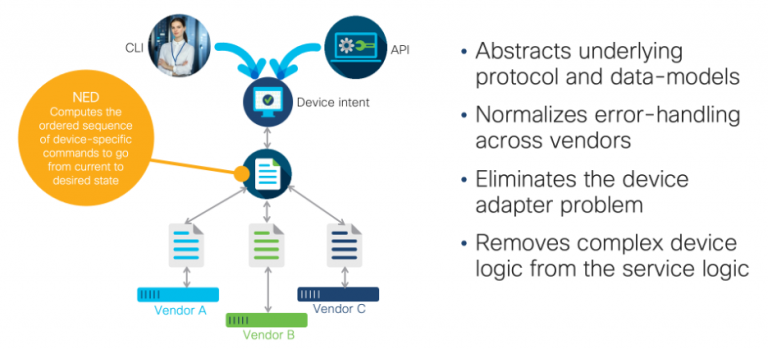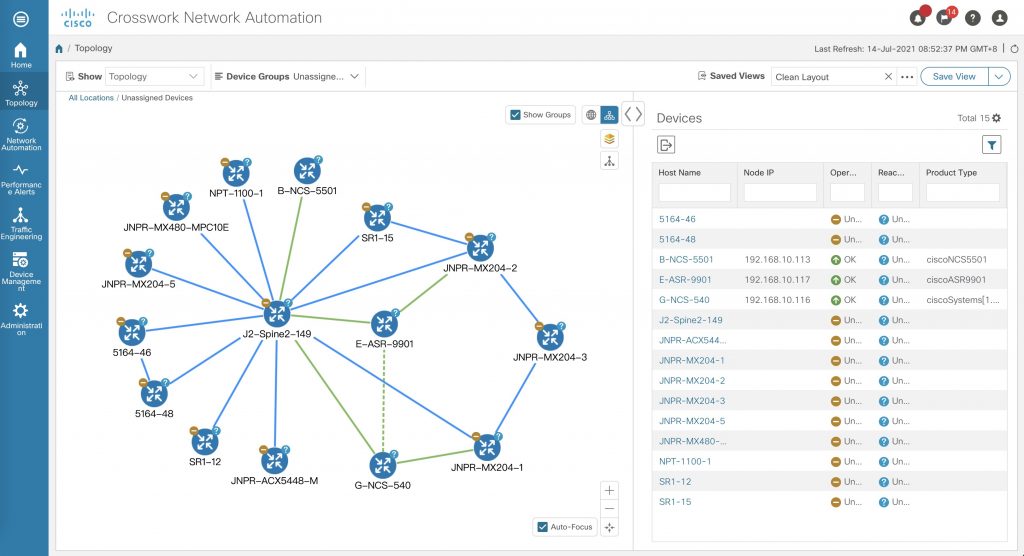Back in 1991, I ran across the debut album, Ten, from a little band out of Seattle called Pearl Jam. Being a fan of classic rock like Led Zeppelin and Eric Clapton, Pearl Jam’s take on grunge appealed to me, and I began to listen to Ten regularly. About a year later, Ten hit the mainstream, and suddenly I had friends telling me to check out this new band called Pearl Jam.
These days, I’m having similar feelings about multi-vendor automation. People in the industry are coming around to something we’ve recognized and invested in for a few years now: any viable automation strategy needs to span vendors and technology domains. Networks are heterogeneous by nature, and for automation tools to accommodate that, the entire process needs to be automated, not just part of it. You need end-to-end insights instead of patchy islands of visibility.
Our journey started more than six years ago when we acquired Tail-F Systems. Beyond delivering industry-leading, model-based infrastructure automation, what made Tail-F special was their unique multi-vendor Network Element Driver (NED) technology:

At acquisition, Tail-F NCS, now Cisco Network Services Orchestrator (NSO), supported around 25 third-party devices. In the intervening years, we’ve continued to invest in the multi-vendor capabilities of NSO, and we now support more than 170 third-party NEDs for everything from network devices to controllers to cloud platforms.
When building our IP controller, Crosswork Network Controller (CNC, currently shipping v 3.0), we wanted a tool to make our customers’ lives easier, regardless of whose routers they had deployed. To that end, we built CNC around industry standards like BGP-LS, gNMI, and PCEP so that customers could have a consistent set of provisioning, optimization, visualization, and assurance capabilities across all their IP transport infrastructure, regardless of vendor. This was clearly seen at recent EANTC interoperability testing, where CNC was shown managing gear from Arista, Ciena, Juniper, Nokia, and Ribbon:

Looking ahead at the newest Crosswork automation tooling, you can clearly see that multi-vendor support remains a first principle for us. The Crosswork Hierarchical Controller (HCO, formerly Sedona NetFusion) uses an approach similar to NSO to provide a consistent set of tooling and capabilities for automating IP and optical networks in a unified manner, regardless of the underlying infrastructure vendors. Finally, some of the most interesting automation tools we’re working on are insights and analytics. Our Crosswork Cloud tools like Network Insights and Traffic Analysis are especially valuable because they’re built around standards and protocols so they can give you insights across your entire network, regardless of how it’s built.

The bottom line is that automation is almost always a “brownfield” exercise. You have a collection of gear and technologies that you’re tasked with making work together. We’ve done our best to help you by building flexible, adaptable, and extensible tools. If you’d like to know more, take a closer look at Cisco Crosswork. Meanwhile, I’m going to dig out my headphones and get my grunge on.

CONNECT WITH US